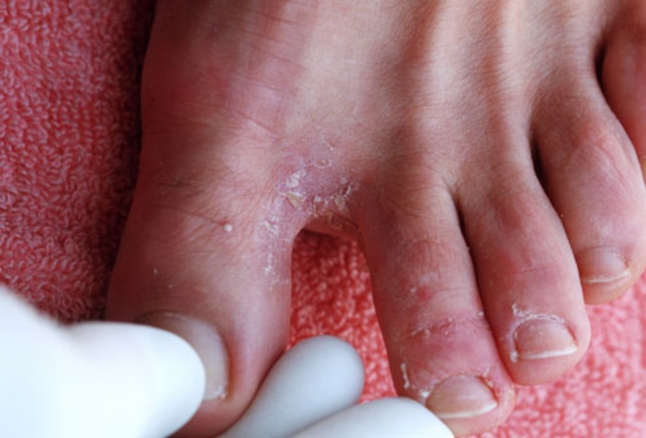The feet are one part of the body that we don’t really pay attention to, however it does have it’s own unique infections and the most common one is Athlete’s foot. It is medically known as tinea pedis, and it is caused by parasites on the skin called dermatophytes. The fungi love to grow in moist places, which is why people who wear tight-fitting trainers regularly or don’t dry their feet properly are more likely to have athlete’s foot.
Athlete’s foot is contagious and it can be spread by direct skin-to-skin contact and indirectly through towels, shoes, floors, etc. It can infect any part of the foot, but most often grows between the toes.
The name “athlete’s foot” doesn’t mean that don’t have to be a professional athlete to suffer from this fungal foot infection. Anyone can have athlete’s foot, young or old.
There are two variants of the condition:
Classic athlete’s foot: the infection is caused by one of the most common fungi. A red itchy rash in the spaces between the toes and possibly small pustules. There may be a small degree of scaling.
The infection can spread to the rest of the foot and other parts of the body.
Rarer athlete’s foot: infection of the soles of both feet by Trichophyton rubrum. The skin reddens and its furrows become marked, resembling chalked lines. If the condition is not treated, a similar rash may appear on one or both palms. After a while, the rash becomes scaly, resembling eczema.
It can also affect your soles or sides of your feet. If it’s not treated, it can spread to your toenails and cause a fungal nail infection. Athlete’s foot sometimes causes fluid-filled blisters.
To prevent athlete’s foot:
Do
- dry your feet after washing them, particularly between your toes – dab them dry rather than rubbing them
- use a separate towel for your feet and wash it regularly
- take your shoes off when at home
- wear clean socks every day – cotton socks are best
Don’t
- walk around barefoot – wear flip-flops in places like changing rooms and showers
- share towels, socks or shoes with other people
- wear the same pair of shoes for more than 2 days in a row
- wear shoes that make your feet hot and sweaty
Treatment
Athlete’s foot can be treated topically with antifungal creams, sprays, liquids and powders that are available from your pharmacist without a prescription.
Treatment should be continued for two weeks after the symptoms have disappeared to ensure the infection has been treated effectively.

Some antifungal creams also contain hydrocortisone, and these are useful when the skin is particularly red and inflamed, as the hydrocortisone reduces inflammation and irritation. The creams with hydrocortisone should not be used for longer than seven days. They are not suitable for children under 10 or during pregnancy and breastfeeding, unless prescribed by a doctor. After seven days, treatment should be continued with a plain antifungal.
If the athlete’s foot has not started to respond after two weeks’ antifungal treatment you should see your doctor, who may prescribe a stronger antifungal cream or antifungal tablets.






